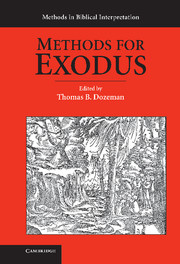Book contents
5 - Feminist Criticism
Published online by Cambridge University Press: 05 June 2012
Summary
VARIETIES OF FEMINIST BIBLICAL CRITICISM
Feminist biblical criticism is a form of scholarly inquiry rooted in the awareness that sexism characterizes both the biblical text and the institutions that claim it and interpret it – both past and present. Attention to reading the biblical text self-consciously from the perspective of women is typically traced back to the work of Elizabeth Cady Stanton who spearheaded a group of nineteen colleagues in the production of The Woman's Bible in the 1890s. Although now controversial for its lack of racial and ethnic inclusion, in its time The Woman's Bible was a radical endeavor aimed to expose the power of the Bible to oppress women. The Woman's Bible is a good example of the long chain of writing that identifies the importance of women's experiences for biblical interpretation. However, using the experiences of women and other groups to augment men's biblical interpretation remained a largely moribund enterprise after the work of Stanton until the rise of the women's movement in North America in the 1960s.
There are multiple versions of feminist criticism in the biblical scholarship that began in the late twentieth century, shaped by the social location of the interpreter. We will highlight four significant developments in contemporary feminist criticism of the Bible: (1) the first wave of white North American feminism; (2) race, social class, and ethnicity based feminism; (3) gender-based feminism; and (4) theological feminism.
- Type
- Chapter
- Information
- Methods for Exodus , pp. 163 - 192Publisher: Cambridge University PressPrint publication year: 2010



